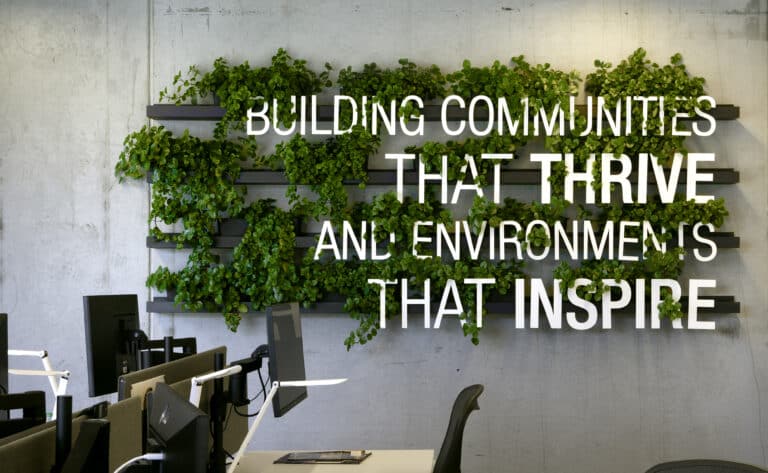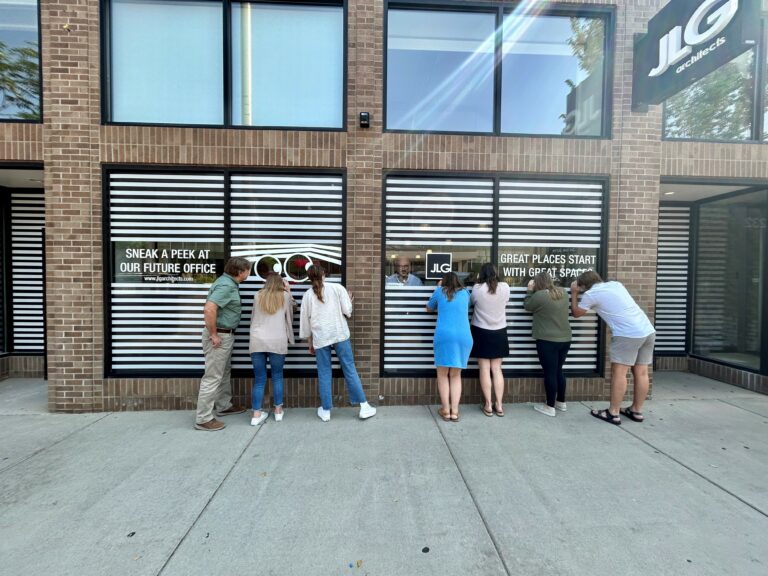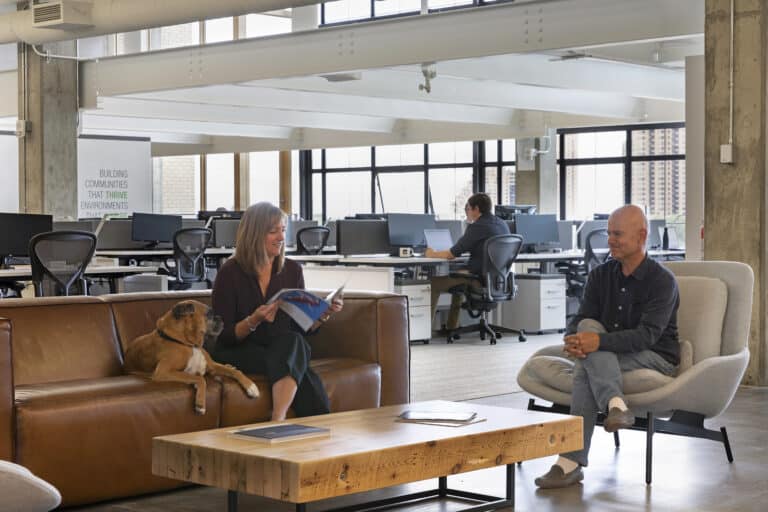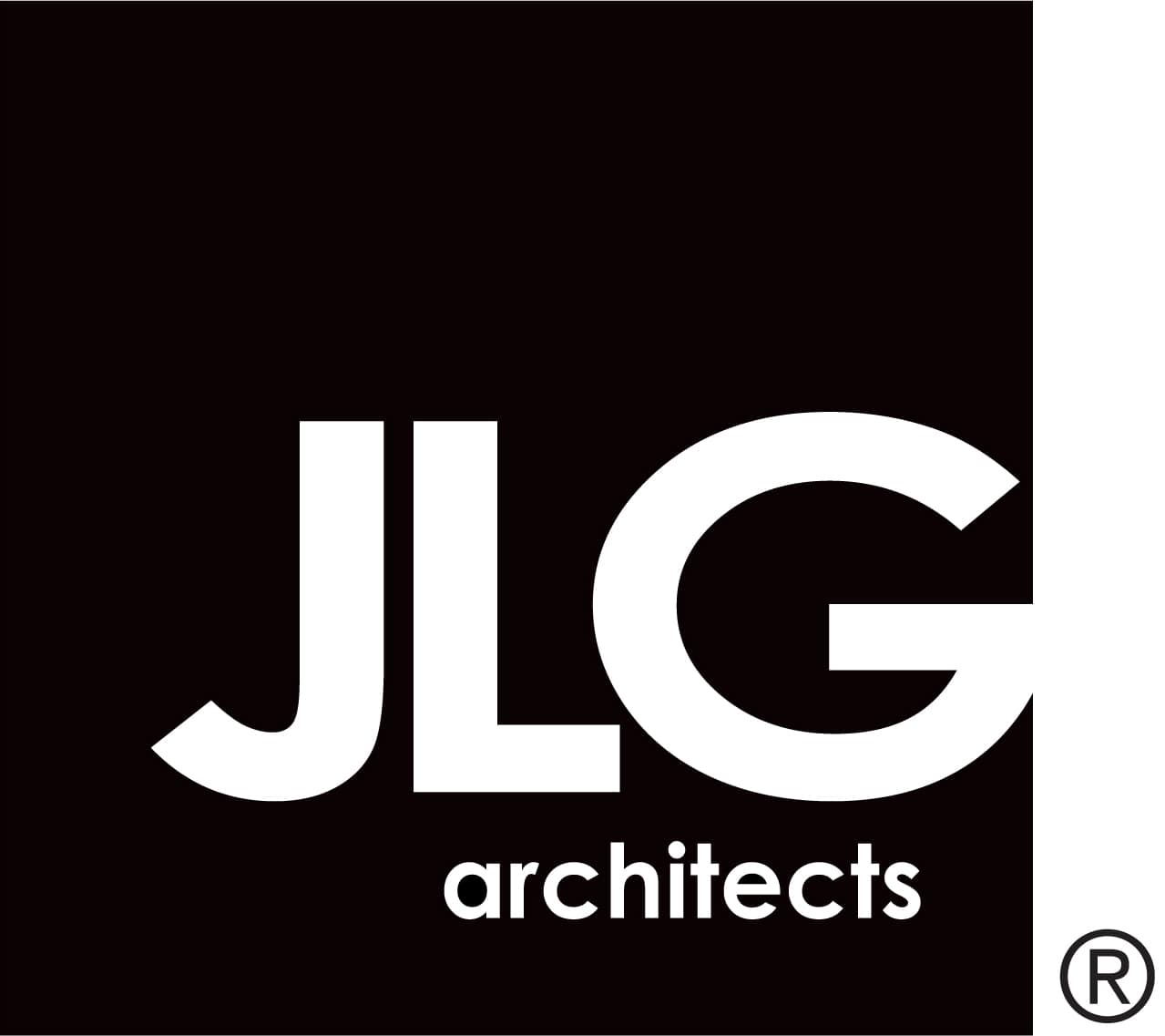The dynamic between work and well-being may be one of the hottest topics in the workplace right now—and for a good reason. Long before the threat of COVID, the workplace was already shifting, including an exploration into how employers could provide more comforts of home while at the office. “We now recognize that we have three offices,” JLG Architects Director of Workplace Design Tracy Jordre said. “We have our work office, our home office and a third office—most often coffee shops and cars. That third office gives us variety because employees expect to be able to work from anywhere.” As the pandemic expedited the conversation, architects and designers have been hard at work reinventing the future workplace. I had the honor of visiting with Jordre to dive deeper and learn how their firm is creating a new workplace outlook for both employers and employees.
About JLG
JLG Architects is a full-service architecture firm with 170+ employee-owners across 10 Midwest offices. As the Director of Workplace Design, Tracy Jordre is responsible for leading and executing business development strategies across the commercial portfolio, in addition to creating vision, project direction and healthy workplace design solutions. Jordre has been with JLG since 2012 and has accrued nearly 30 years of experience in the architecture field.
Balancing Revenue vs. Well-Being
One thing you’ll hear time and time again is a greater emphasis on employee feedback in the workplace. We live in a time where a lot of companies are facing challenges in getting people back to the office, making employee feedback a necessity. The hybrid system gave employees the comforts of working from home and a new outlook that oftentimes devalues the office. Many still think, “If I can get the same work done at home where I feel inspired and be just as efficient, then what’s the benefit of coming into the office?”
And that’s exactly the point—the hybrid work system has forced companies to take a long look at their workspace and reinvent the office as not only an inspiring and engaging place for employees but also as a place where efficiencies are created for employers.
Hybrid systems are requiring employers to introduce environments that are focused on employee well-being, bridging the gap between residential and commercial design—”resimercial” if you will.
“The idea is for staff to want to come back, not be forced to come back,” Jordre said. “When companies create a culture where employees feel valued and cared for, recruiting and retention happen almost naturally. The office serves as a hub of connection, collaboration and culture… truly, the future of the workplace is a destination of choice, not of obligation.”
Prior to the pandemic, employee well-being wasn’t necessarily at the top of most companies’ priority list, but 2020 changed everything. “In my opinion, well-being is the fundamental principle for an office to thrive,” Jordre said. “Employers need to really listen to their employees right now—it’s critical.”
Four Workplace Concepts Worthy of Investment
1. Wellness initiatives at work
“I can’t tell you how many fitness rooms we have removed from offices because it wasn’t what employees truly wanted and the office culture didn’t support the use,” Jordre said. “Employers hear talk about wellness and add in a few treadmills, assuming fitness is the end goal. And, although fitness is a factor in collective wellness, employees really want and need mental health initiatives to be a higher priority. Surroundings play a powerful role in our mental health and daily outlook. It’s critically important to ask, ‘How can we provide amenities that meaningfully impact employees using the space’.”
2. Get well while at work
When anxiety peaks or a headache arrives, most people leave work. Jordre sees this as a ‘how to get well while at work’ sort of opportunity. “What if the workplace had a respite room to take a quiet moment, reset and see if the situation subsides? This is an opportunity that impacts the bottom line. If staff can get well at work, insurance costs start to decrease, impacting overall revenue from a larger perspective.”
3. Design for acoustics
Acoustical solutions are critical in the workplace, especially in minimizing noise that can break workflow and productivity. “Acoustics are often an afterthought, but heavily impact the workplace and culture,” Jordre said. “We design for acoustics from the start, minimizing the need for solutions later.”
4. Workplace neighborhoods
“Instead of corporate offices with an old hierarchical approach— corporate offices on the exterior walls, middle management offices, then remaining staff inside—what if we turn that on its head and locate office needs into neighborhoods? Create designated zones for quiet, focused work, community, collaboration and fun—giving staff appropriate noise levels for task-optimized focus,” Jordre explained. “Now, you’ve created a workplace that not only makes sense spatially and visually but also acoustically. Design is just as much a game of balancing sound as it is about balancing visuals.”
When is it time to change? With in-depth consideration and employee feedback, Jordre advises, “If the space isn’t supporting a thriving environment, it’s time for a change.”
Two Office Design Trends of the Future
- JLG’s Tracy Jordre is setting the pace for workplaces to close the divide between indoor and outdoor design, giving employees more access to natural light, gardens, walking paths, firepits and rooftop patios.
- The future of the office is already a reality in places like New York where they have programmed and personalized employee workstations. Walk up to any desk, punch in a code and see your customized workspace. Instantly, the screensaver jumps to your work portfolio, the digital frame displays family pictures and the desk and chair adjust to your ergonomics.





